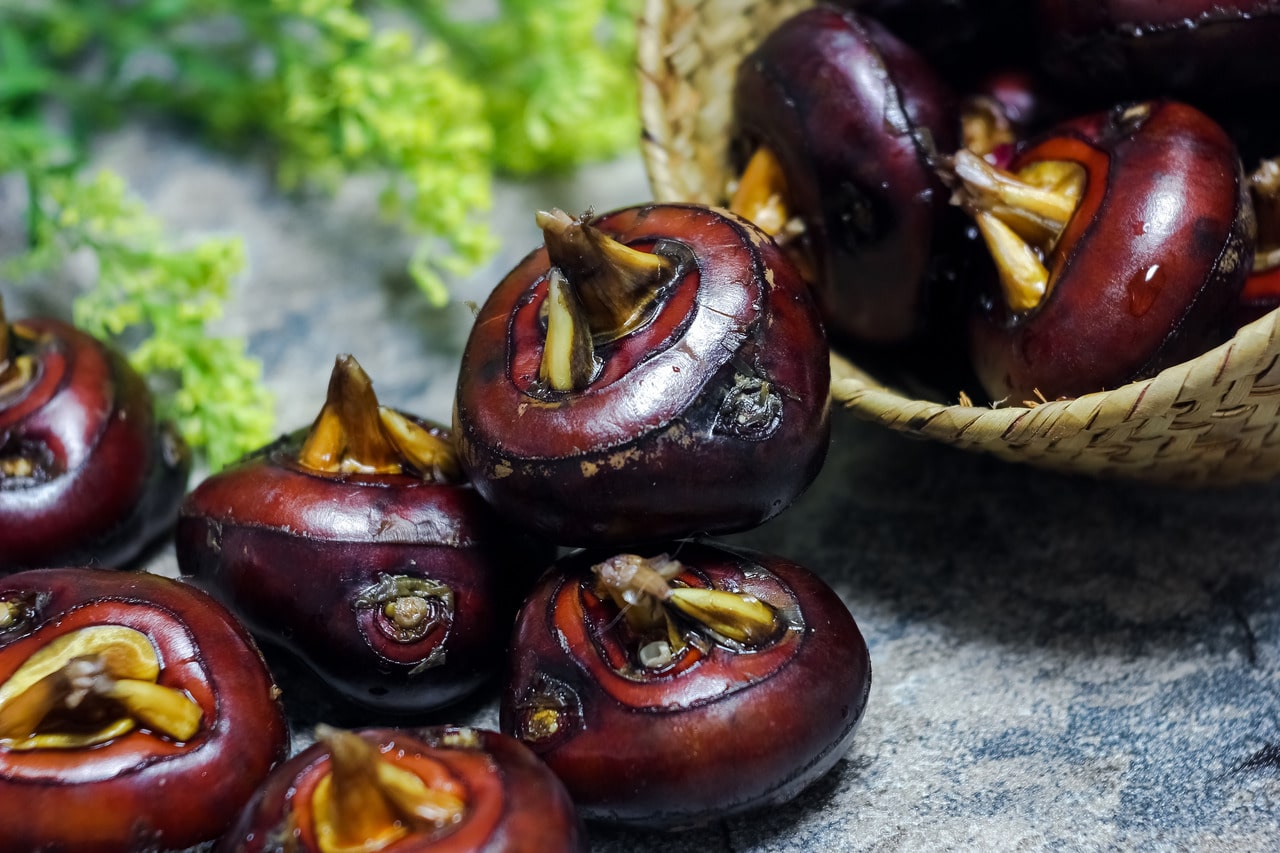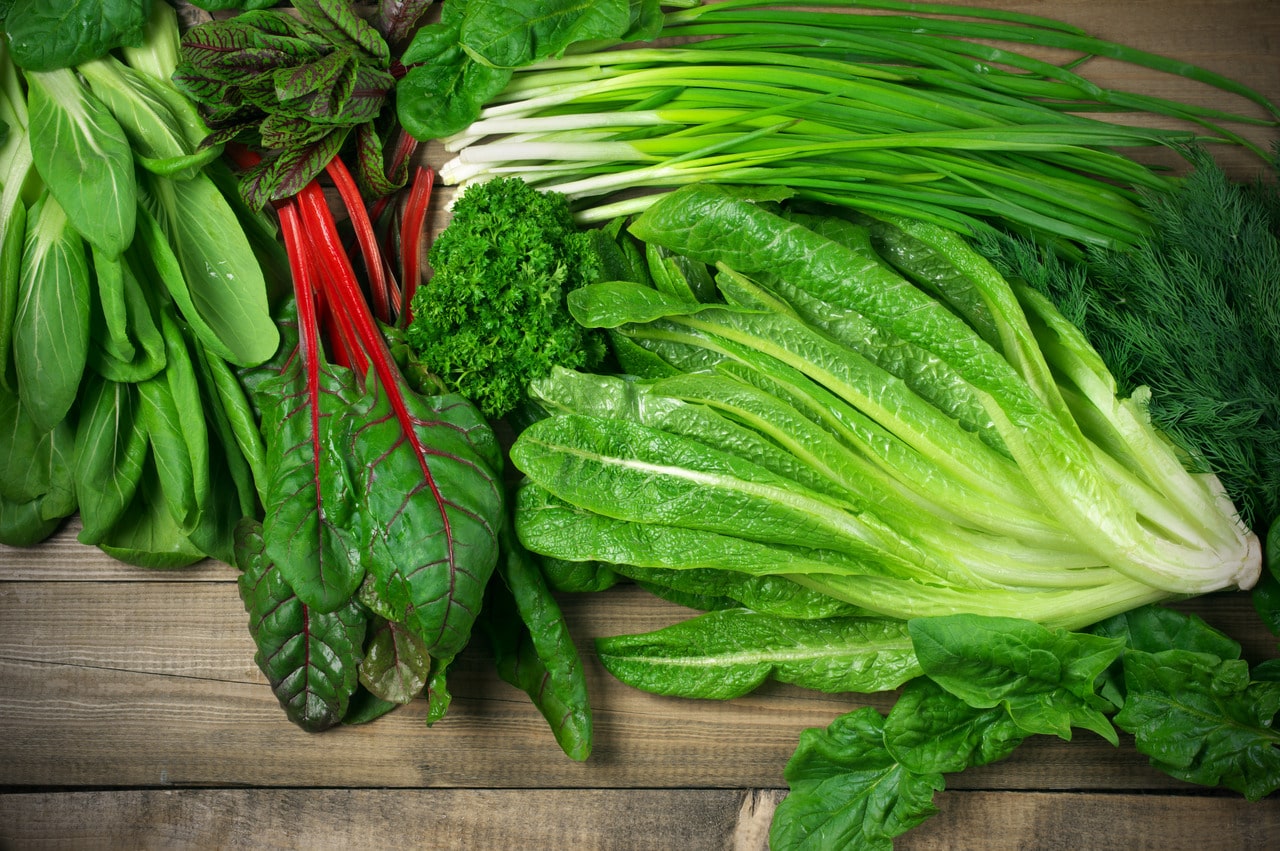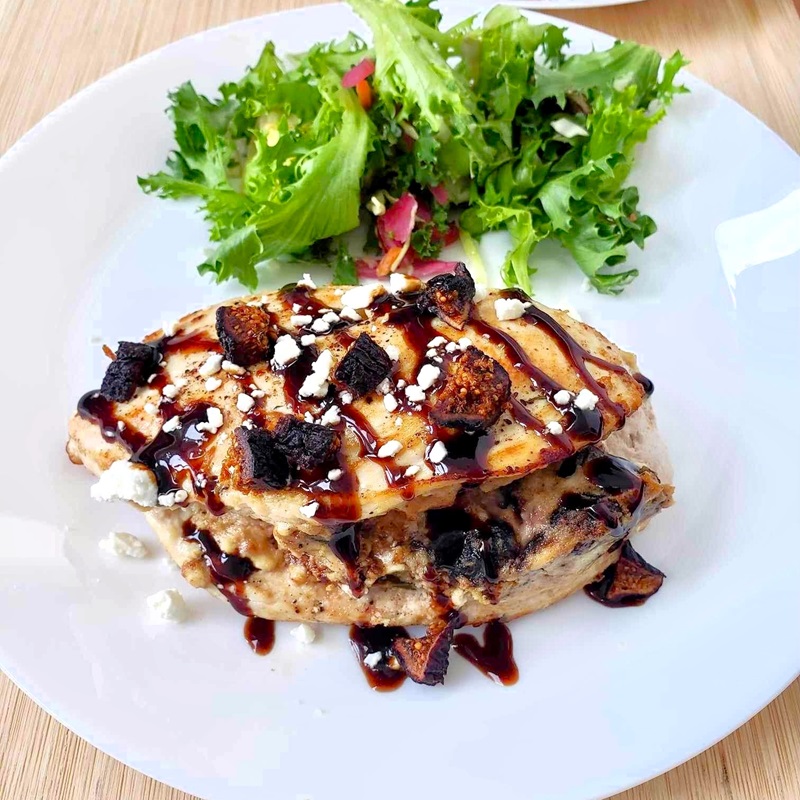Diet and Nutrition
Benefits Of Water Chestnuts: Ways to Use Water Chestnuts
Originating from Southeast Asia, water chestnuts have a rich history of culinary and medicinal applications. These aquatic plants belong to the Cyperaceae family and are known for their distinctive corms, which are the edible, bulbous portions that grow underground. While they bear the name “chestnut,” they are not nuts at all but rather rhizomatous vegetables cultivated primarily for their crunchy, succulent corms.
Water chestnuts offer a delightful crispness and a subtle sweetness, making them a versatile ingredient in stir-fries, salads, and other dishes. Beyond their culinary use, these aquatic plants also hold a place in traditional Chinese medicine.
Nutritional Profile of Water Chestnuts
The amount of water chestnuts one can eat in a day depends on the dietary preferences and nutritional goals. However, it’s essential to consume them in moderation as part of a balanced diet. A typical serving of sliced water chestnuts is about 1/2 cup (approximately 60-70 grams).
Here is the nutritional value of 100 g of raw water chestnuts:
- Calories: 97 kcal
- Protein: 1.4 g
- Carbohydrates: 23.9 g
- Fats: 0.1 g
- Fibre: 3 g
- Calcium: 11 mg
- Potassium: 584 mg
- Magnesium: 22 mg
- Phosphorous: 63 mg
- Vitamin C: 4 mg
- Folate: 16 µg
- Choline: 36.2 mg
Health Benefits of Water Chestnuts
Water chestnuts offer a multitude of culinary uses and bring along various health benefits. Here are a few of these benefits:
Rich in Antioxidants
Water chestnuts contain high levels of antioxidants, particularly ferulic acid, gallocatechin gallate, epicatechin gallate, catechin gallate, and vitamin C. Antioxidants work to protect the body cells from oxidative stress, reducing the risk of chronic diseases and promoting overall well-being.
The presence of vitamin C in water chestnuts strengthens the body’s defence against harmful free radicals, improving the immune system and potentially lowering the risk of various diseases. Regular consumption of water chestnuts can be an easy way to add disease-fighting antioxidants into your daily diet.
Help Lower Heart Disease Risk
Incorporating water chestnuts into a heart-healthy diet, along with other nutrient-rich foods, can be a positive step toward managing blood pressure and reducing the risk of heart disease.
- They are a good source of potassium, which can help relax blood vessel walls, reduce blood pressure, and protect against heart disease.
- Water chestnuts are naturally low in sodium. A low-sodium diet helps prevent hypertension.
- Water chestnuts also contain dietary fibre, which can aid in controlling blood pressure. High-fibre diets promote better cardiovascular health by reducing cholesterol levels and improving overall heart function.
- The antioxidants in water chestnuts help protect the heart by reducing oxidative stress and inflammation.
- Water chestnuts are naturally low in fat and cholesterol, which is beneficial for heart health. High dietary fat and cholesterol intake can clog arteries.
Reduce the Risk of Oxidative Stress and Cancer
Water chestnuts can help reduce the risk of oxidative stress due to their antioxidant properties. Antioxidants help neutralise harmful molecules called free radicals in the body. Free radicals can cause oxidative stress by damaging cells, proteins, and DNA, which can lead to various health issues, including chronic diseases.
Water chestnuts contain a powerful antioxidant called ferulic acid. In lab studies, the results show that ferulic acid could slow down the growth and encourage the death of some cancer cells, like those from breast, skin, thyroid, lung, and bone cancers. However, it’s essential to know that these findings mostly come from lab studies using test tubes, and there is a need for more research involving humans.
Offers Cooling Properties
Water chestnuts are considered a “cooling” food in traditional Chinese medicine. They help reduce excessive internal heat in the body, making them suitable for individuals with conditions associated with heat, such as fever, inflammation, or excessive thirst. Due to their cooling properties, water chestnuts are hydrating and can help counteract fluid imbalances in the body.
Support Weight Loss
Water chestnuts are relatively low in calories, making them a good choice for those looking to manage their calorie intake. Their 74% water content provides a feeling of fullness without a significant calorie load. So, one can snack on water chestnuts instead of going for high-calorie, low-nutrient foods.
These aquatic vegetables are also a good source of dietary fibre. Fibre is known to promote feelings of satiety, helping one feel full and satisfied for more extended periods, which can reduce overall calorie intake and aid in weight management. Water chestnuts are naturally low in fat, making them a healthy option in a low-fat diet.
It’s important to note that while water chestnuts can be a part of a weight loss plan, successful weight management also depends on overall dietary choices, portion control, and regular physical activity.
Summary
Water chestnuts are a nutritional powerhouse, abundant in antioxidants like ferulic acid, gallocatechin gallate, epicatechin gallate, catechin gallate, and vitamin C. These antioxidants protect cells from oxidative stress, reducing the risk of chronic diseases. Vitamin C in water chestnuts boosts the immune system, potentially lowering disease risks. They aid heart health by lowering blood pressure with their high potassium content, low sodium, and dietary fibre. The antioxidants further protect the heart from oxidative stress and inflammation, while their low fat and cholesterol content is good for heart health. Water chestnuts support weight loss with their low calorie and fat content, making them an excellent choice for calorie control. Their high water and fibre content contribute to satiety, reducing overall calorie intake. Additionally, they contain ferulic acid, which has shown promise in inhibiting the growth of specific cancer cells in lab studies. Due to their cooling properties, water chestnuts are hydrating and can help counteract fluid imbalances in the body. While water chestnuts have various health benefits, more research involving humans is necessary.
Ways to Use Water Chestnuts
Water chestnuts are a versatile ingredient. Here are some ways to use them:
- Stir-Fries: Add sliced or diced water chestnuts to stir-fry dishes for a crisp texture.
- Salads: Toss sliced or chopped water chestnuts into green salads, pasta salads, or coleslaw.
- Soups: Add whole or sliced water chestnuts into clear soups to enhance their texture and taste.
- Asian Dishes: Use water chestnuts in traditional Asian dishes like sushi, curries, Kung Pao chicken, sweet and sour dishes, and moo goo gai pan. Some sushi rolls, such as California rolls, include water chestnuts for added texture and flavour.
Given below are two healthy recipes.
1. Water Chestnut Stir-Fry
Servings: 2
Ingredients
- Water chestnuts: 150g (sliced)
- Mixed vegetables (bell peppers, carrots, broccoli): 200g (sliced)
- Garlic: 2 cloves (minced)
- Ginger: 1-inch piece (finely chopped)
- Soy sauce: 2 tbsp
- Sesame oil: 1 tbsp
- Red chilli flakes: 1 tsp
- Salt: to taste
- Fresh coriander leaves: for garnish
Method of Preparation
- Heat sesame oil in a wok or large skillet over medium-high heat.
- Add minced garlic and chopped ginger and stir-fry for about 30 seconds until fragrant.
- Add the sliced water chestnuts and mixed vegetables to the wok.
- Stir-fry for 3-4 minutes until the vegetables are tender yet crisp.
- Drizzle soy sauce over the stir-fry and toss well to combine.
- Sprinkle red chilli flakes and a pinch of salt for seasoning. Adjust the spiciness to your liking.
- Cook for an additional 2 minutes, ensuring the water chestnuts are heated through.
- Garnish with fresh coriander leaves.
- Serve hot as a nutritious and crunchy stir-fry.
2. Water Chestnut Salad
Servings: 2
Ingredients
- Water chestnuts: 150g (chopped)
- Cucumber: 1 (sliced)
- Cherry tomatoes: 50g (halved)
- Red onion: ¼ (thinly sliced)
- Fresh mint leaves: 15g (chopped)
- Lime juice: 2 tbsp
- Olive oil: 1 tbsp
- Salt and pepper: to taste
Method of Preparation
- In a large bowl, combine the chopped water chestnuts, sliced cucumber, halved cherry tomatoes, thinly sliced red onion, and chopped fresh mint leaves.
- In a small bowl, whisk together the lime juice and olive oil to create the dressing.
- Drizzle the dressing over the salad and toss to coat all the ingredients.
- Season with salt and pepper according to your taste.
- Chill the water chestnut salad in the refrigerator for about 30 minutes before serving.
- Serve as a refreshing and healthy salad that highlights the crispness of water chestnuts alongside other vibrant vegetables.
Potential Side Effects of Water Chestnuts
Water chestnuts are generally safe to consume for most people. However, there are a few potential side effects to keep in mind:
- Allergic Reactions: Allergic reactions are relatively rare, but some individuals may be allergic to water chestnuts. It can lead to skin rash, itching, swelling, or difficulty breathing.
- Digestive Issues: In rare cases, excessive consumption of water chestnuts may cause digestive discomfort, including gas, bloating, or diarrhoea.
- Cross-Contamination: If you have a severe shellfish allergy, be cautious when consuming water chestnuts, as they are sometimes processed in facilities that also handle shellfish, which can lead to cross-contamination. Ensure you source water chestnuts from reputable sources and prepare them correctly to minimise the risk of contamination.
- High in Carbohydrates: Water chestnuts are relatively high in carbohydrates, which may be a concern for individuals on low-carb diets or those managing blood sugar levels.
Summary
Water chestnuts are generally safe to eat, but a few potential side effects may occur. Allergic reactions, though rare, can occur and may result in symptoms like skin rash, itching, swelling, or difficulty breathing. Excessive consumption can lead to diarrhoea, gas, or bloating in some cases. Those with severe shellfish allergies should be cautious due to the risk of cross-contamination. Water chestnuts are relatively high in carbohydrates, which may be a concern for those on low-carb diets or managing blood sugar levels.
The Final Word
Water chestnuts primarily serve as a food source in various cuisines, particularly in Asian cooking. They are known for their crisp texture and mild, slightly sweet flavour, which adds a unique element to dishes. However, in traditional Chinese and folk medicine, water chestnuts have been used for some medicinal purposes. However, their use in this context is limited, and scientific evidence for their medicinal benefits is often limited or inconclusive.
Disclaimer: The purpose of this article is just to disperse knowledge and raise awareness. It does not intend to replace medical advice from professionals. For further information, please contact our certified nutritionists Here.
Frequently Asked Questions
Q: What are water chestnuts, and what do they taste like?
A: Water chestnuts are not nuts but rather aquatic vegetables. They are the corms of a type of water plant called Eleocharis dulcis, which is commonly grown in Southeast Asia and some other parts of the world. The taste and texture of water chestnuts can vary depending on their preparation, but in their raw form, they have a crisp and crunchy texture.
Q: Are water chestnuts a type of nut, and are they related to chestnuts?
A: Water chestnuts are aquatic vegetables with a crunchy, mildly sweet taste. They are not nuts and are not related to chestnuts.
Q: How are water chestnuts harvested and prepared for consumption?
A: Harvesting involves digging up the dark brown bulb or corms from underwater, then they are peeled and sliced for consumption. They are also available canned, making them convenient for cooking and consumption.
Q: What is the nutritional profile of water chestnuts?
A: Water chestnuts are low in calories, with some fibre, protein, and carbohydrates, making them a nutritious choice. They are a good source of minerals like potassium, manganese, and copper. Moreover, raw water chestnuts comprise 74% water.
Q: Can water chestnuts be eaten raw, or do they need to be cooked?
A: They are typically cooked but can be eaten raw. Cooking enhances its flavour and texture. When cooked, they maintain their crispness.
Q: Are there different varieties of water chestnuts?
A: There are different varieties, with the Chinese water chestnut being the most common. Another one is water caltrops (Trapa natans), which are different from water chestnuts (Eleocharis dulcis).
Q: Are water chestnuts a good source of fibre and other nutrients?
A: Chinese water chestnuts are a good source of fibre and contain various nutrients, making them a healthy addition to your diet. They are a good source of minerals like potassium, manganese, and copper. Chinese water chestnuts are relatively low in calories, which makes them a good choice for those looking to manage their calorie intake.
Q: How are water chestnuts typically used in culinary dishes?
A: Water chestnuts go well in stir-fries and salads and as a crunchy element in various dishes. They are popular in Asian cuisine, particularly as an ingredient in spring rolls, to provide a contrasting texture and flavour.
Q: Can water chestnuts be used in both sweet and savoury recipes?
A: Yes, water chestnuts go well in both sweet and savoury recipes. They add a refreshing crunch and a subtle, sweet flavour.
Q: Are there any health benefits associated with consuming water chestnuts?
A: They can offer hydration and a source of nutrients like potassium. Foods rich in potassium can help reduce heart disease risk factors like high blood pressure. Water chestnuts consist of 74% water, which can keep one fuller for longer with fewer calories.
Q: Are water chestnuts safe for individuals with nut allergies?
A: Water chestnuts are not nuts. So, they are generally safe for those with nut allergies.
Q: Can water chestnuts be grown at home, and if so, what are the requirements?
A: Growing water chestnuts at home requires an aquatic environment, like a pond or a container with water. Optimal conditions for plant growth involve temperatures in the range of 30 to 35°C during the leafy growth stage and slightly cooler temperatures, around 5°C lower when the tubers are in the process of formation. Additionally, a minimum soil or water temperature of 15°C is necessary to ensure sufficient development of the corms.
Q: What is the shelf life of water chestnuts, and how should they be stored?
A: Store water chestnuts in a cool, dry place, and they can last for several weeks.
Q: Are there any traditional or medicinal uses of water chestnuts?
A: Traditional Chinese medicine uses water chestnuts for various ailments. For example, they have cooling properties and may help soothe the digestive system.
Q: How do water chestnuts differ from other similar ingredients, such as chestnut flour or water caltrop?
A: Water chestnuts differ from chestnut flour and water caltrop in terms of taste, texture, and usage, with the latter being a hard, horn-shaped or bat-shaped fruit.
Research Sources
Data by the US Department of Agriculture on water chestnuts
The Chinese water chestnut (Eleocharis dulcis): An Overview
Identification Of Major Phenolic Compounds of Chinese Water Chestnut and their Antioxidant Activity
Related Posts
- A Diet Primarily based Information: HealthifyMe
Water chestnuts, also known as “singhara” or “water caltrops,” are a singular and nutritious ingredient…
- Drink Water to Develop Hair
We're not attempting to affect you to purchase a Stanley Cup, however we now have…
- What That PFAS Water Analysis Really Means, From A Research Writer
Per- and polyfluoroalkyl substances (PFAS) are a bunch of artifical chemical compounds often known as…


















